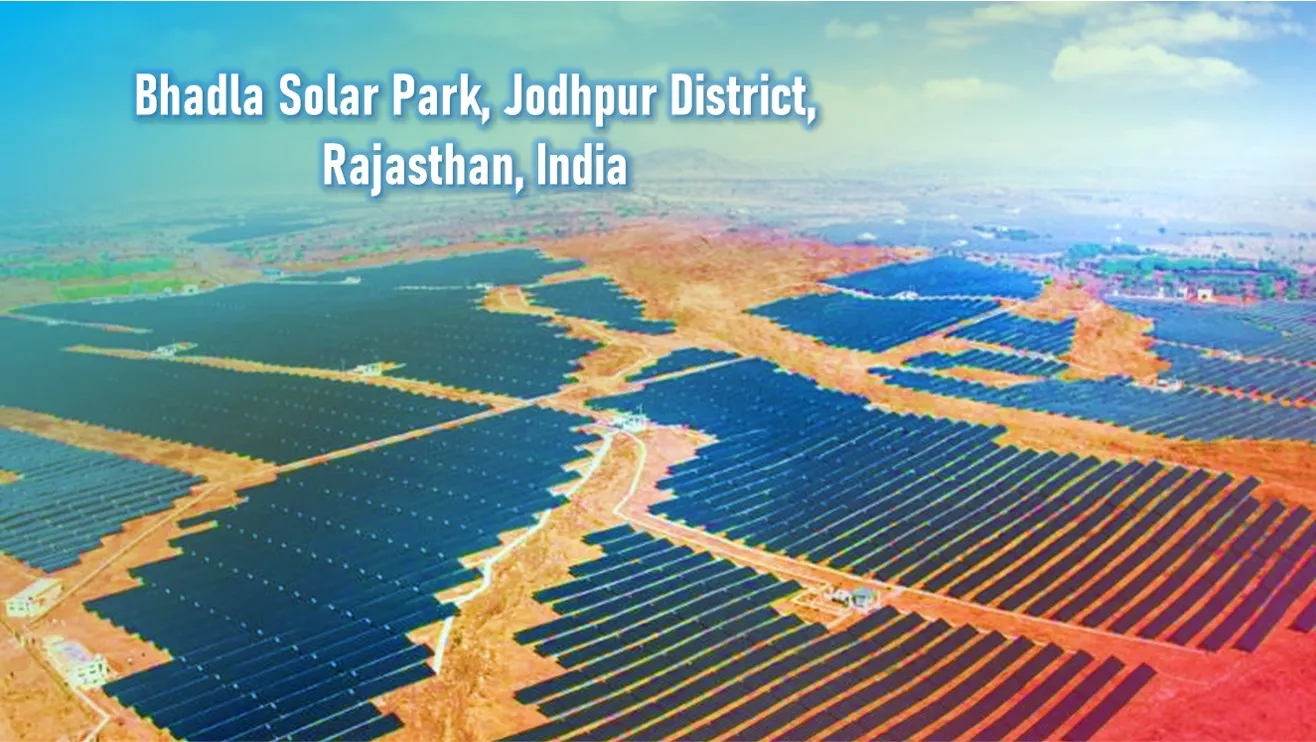This article is on the Largest Solar Power Plants in India and a small introduction of solar energy of India. Also mentioned how much solar energy generates from each of the solar power plants in India
Solar Energy in India
India is among the Tropical countries which receive ample solar insolation throughout the year. About 5,000 trillion kWh per year energy is incident over India’s land area with most parts receiving 4-7 kWh per sq. m per day.
India ranks fourth globally in terms of solar power generation. Total solar power capacity installed in the country as on June 30, 2023 is 70.10 GW and in addition, 55.90 GW is under installation.
The top seven states in terms of highest installed capacity include Rajasthan (17.83GW), Gujarat (10.13 GW), Karnataka (9.05 GW), Tamil Nadu (6.89 GW), Maharashtra (4.87 GW), Telangana (4.69 GW) and Andhra Pradesh (4.55 GW).
National Institute of Solar Energy, an autonomous institution of MNRE (Ministry of New and Renewable Energy) is the apex institute for research and development in the field of Solar Energy.
List of Largest Solar Power Plants In India
| Sr.No. | Name | Installed Capacity (MW) |
| 01 | Bhadla Solar Park, Rajasthan | 2,245 |
| 02 | Pavagada Solar Park, Karnataka | 2,050 |
| 03 | NP Kunta Ultra Mega Solar Park, Andhra Pradesh | 1500 |
| 04 | Kurnool Ultra Mega Solar Park, Andhra Pradesh | 1000 |
| 05 | Rewa Ultra Mega Solar, Madhya Pradesh | 750 |
Bhadla Solar Park, Rajasthan
Bhadla Solar Park, located in Rajasthan, stands as a testament to human innovation in renewable energy.
As the world’s largest solar park, it boasts an impressive installed capacity of 2,245 megawatts (MW), harnessing the abundant sunlight of the region to generate clean and sustainable electricity.
Nestled amidst the vast desert landscape, this sprawling solar power plant symbolizes a significant stride towards a greener future, showcasing the immense potential of solar energy in meeting our growing energy needs while mitigating the impacts of climate change.
Pavagada Solar Park, Karnataka
Pavagada Solar Park, situated in Karnataka with an installed capacity of 2,050 megawatts (MW), it stands as a beacon of sustainable progress and innovation in the region.
Harnessing the abundant sunlight that graces Karnataka’s landscape, this solar power plant serves as a testament to the state’s commitment to clean energy initiatives.
The Pavagada Solar Park not only signifies a significant step towards reducing carbon emissions but also underscores the potential of solar energy in meeting the energy demands of the present and future generations.
NP Kunta Ultra Mega Solar Park, Andhra Pradesh
NP Kunta Ultra Mega Solar Park, situated in Andhra Pradesh, with an impressive installed capacity of 1,500 megawatts (MW), it represents a significant investment in harnessing solar power to meet the growing energy demands of the state.
This solar park, named after its location, NP Kunta, signifies Andhra Pradesh’s commitment to renewable energy initiatives. The NP Kunta Ultra Mega Solar Park serves as a cornerstone in the transition towards a cleaner and more sustainable energy future for Andhra Pradesh and beyond.
Kurnool Ultra Mega Solar Park, Andhra Pradesh
The Kurnool Ultra Mega Solar Park, located in Andhra Pradesh, is a shining example of the state’s dedication to renewable energy. Boasting an installed capacity of 1,000 megawatts (MW), it stands as a formidable contributor to India’s solar power capacity.
The Kurnool Ultra Mega Solar Park not only drives economic growth but also plays a pivotal role in mitigating climate change by reducing carbon emissions. As one of Andhra Pradesh’s flagship renewable energy projects, it signifies a significant step towards a greener and more sustainable future for the state and the nation as a whole.
Rewa Ultra Mega Solar, Madhya Pradesh
The Rewa Ultra Mega Solar project, situated in Madhya Pradesh, with an installed capacity of 750 megawatts (MW). The Rewa Ultra Mega Solar project not only contributes to India’s ambitious renewable energy targets but also serves as a model for other regions seeking to embrace solar energy as a key component of their energy mix.
Also Read:
Government Solar Power Projects Schemes, Policies and Initiatives in India
What is Nuclear Reactor and its Schematic Design?











